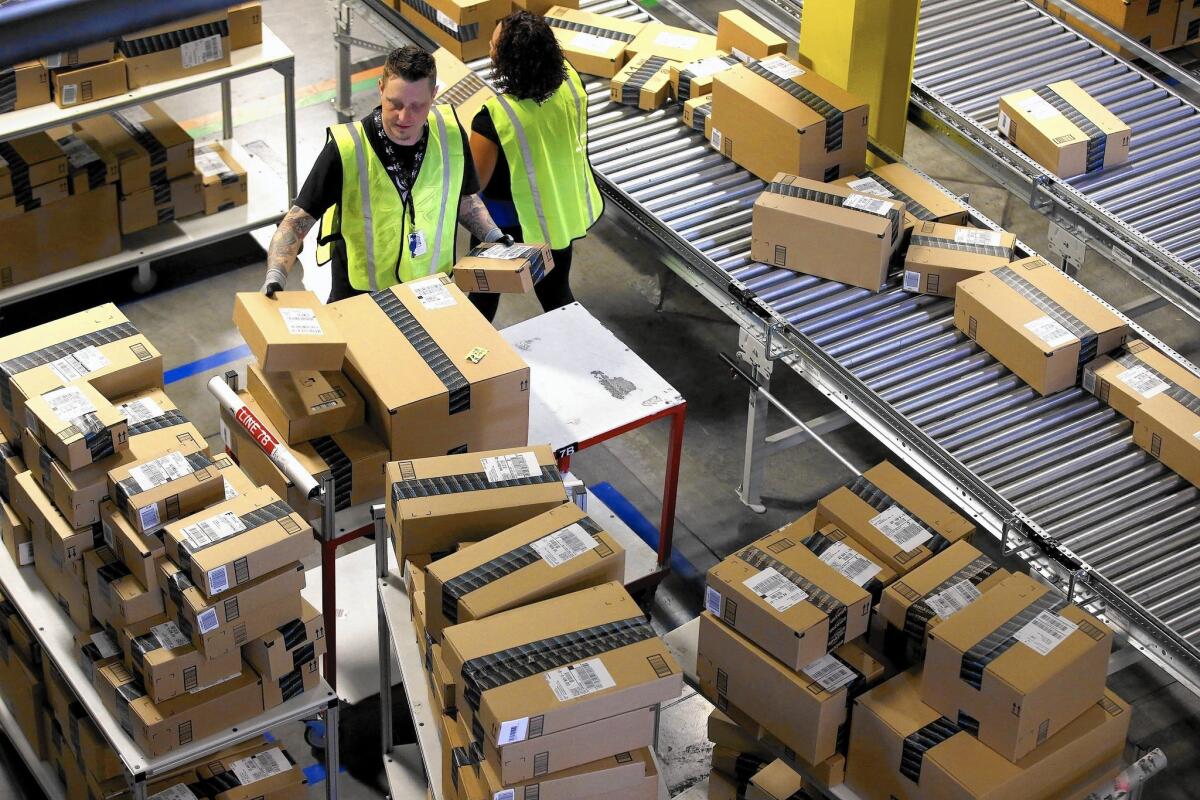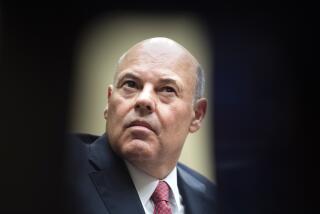President Trump calls for postage rate increase as Amazon gets âricherâ

President Trump took aim at the United States Postal Service on Friday, admonishing the agency for its financial losses and for failing to charge more.
âWhy is the United States Post Office, which is losing many billions of dollars a year, while charging Amazon and others so little to deliver their packages, making Amazon richer and the Post Office dumber and poorer? Should be charging MUCH MORE!â the president wrote on Twitter.
Amazon stock fell 6.1% in the hours following the tweet. A representative of the postal service did not immediately respond to a request for comment.
It is unclear why the president chose Friday to lash out at the postal service. The agency, which is completely self-funded through the sale of postal products and services, last reported its earnings on Nov. 17. During its 2017 fiscal year, spanning Oct. 1, 2016, to Sept. 30, 2017, the USPS recorded $69.6 billion in revenue, a decrease of $1.8 billion from the previous year. The postal service reported a net loss of $2.7 billion, a decrease in net loss of $2.8 billion compared with 2016.
In 2017, mail volumes also declined by approximately 5 billion pieces, or 3.6%, while package volumes grew by 589 million pieces, or 11.4%. This increase could be attributed to Amazon orders â the e-commerce giant announced this week that holiday shoppers broke spending records on its platform. Globally, Amazon reported more than 1 billion items ordered during the holiday season. From Thanksgiving to Cyber Monday alone, shoppers around the world bought more than 140 million products from Amazon.
Between July and September, Amazon paid $5.4 billion in worldwide shipping costs, a 39% increase from the same period in the previous year. That amounts to nearly 11% of the $43.7 billion in total revenue it reported in that same period.
Amazon uses all the major carriers, including UPS, FedEx and the U.S. Postal Service to handle its deliveries.
In 2013, Amazon reached a five-year deal with the Postal Service to offer delivery on Sundays. The specifics of the deal have not been made public, although Citigroup analysis cited by the Wall Street Journal estimates that Amazon receives a $1.46 discount per package. Amazon did not immediately respond to a request for comment.
Despite the growth in package volume offsetting some of the decline in mail volume, the USPS said that the overall volume declined by 4.9 billion pieces.
Some of the agencyâs most significant spending, however, didnât come from service expenses but inflation, interest rates, and legislated obligations to pay pensions and retiree benefits.
The USPS is the second largest civilian employer in the United States, employing around 640,000 people, so âa 1% change in 10-year treasury rates can cause an increase or decrease in workersâ compensation liability of approximately $2 billion,â the agency said in its 2017 annual report to Congress.
The agency is also obligated to serve rural regions, many of which would otherwise go unserved. In a fact-sheet published in 2017, the USPS said it is the only delivery option for much of rural America, and that it delivers to 43 million rural addresses.
âPaying for that infrastructure is becoming increasingly challenging, due to the cost of serving approximately one million new delivery points annually,â according to the report. âThis challenge is exacerbated as mail volumes decline and mandated costs continue to rise. Under existing laws and regulations, our business model is broken.â
The USPS has over the years introduced modest increases to the costs of shipping. The next rate increase, which will take effect Jan. 21, 2018, will increase the cost of non-commercial postage stamps from 49 cents to 50 cents, and large flat envelopes from 98 cents to a dollar.
Twitter: @traceylien
UPDATES:
12 p.m.: This article was updated to include mention of Amazonâs five-year deal with the U.S. Postal Service.
8 a.m.: This article was updated with details about Amazonâs holiday sales and a USPS rate increase scheduled for next month.
This article was originally published at 7:20 a.m.







